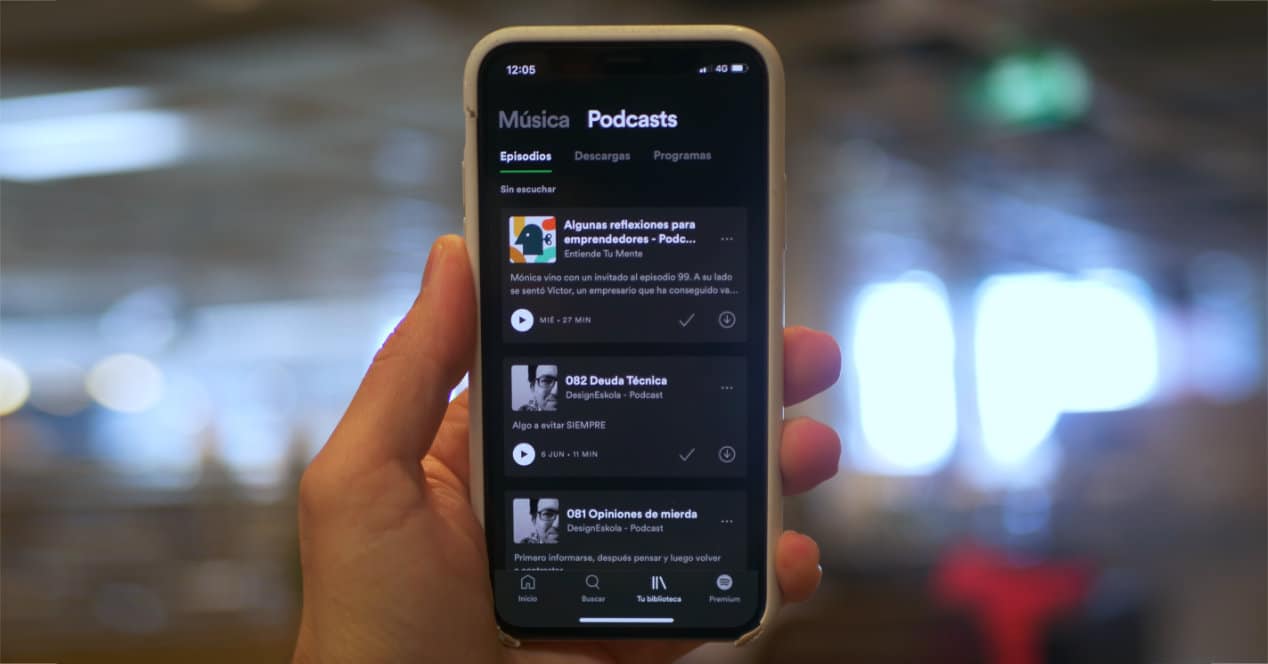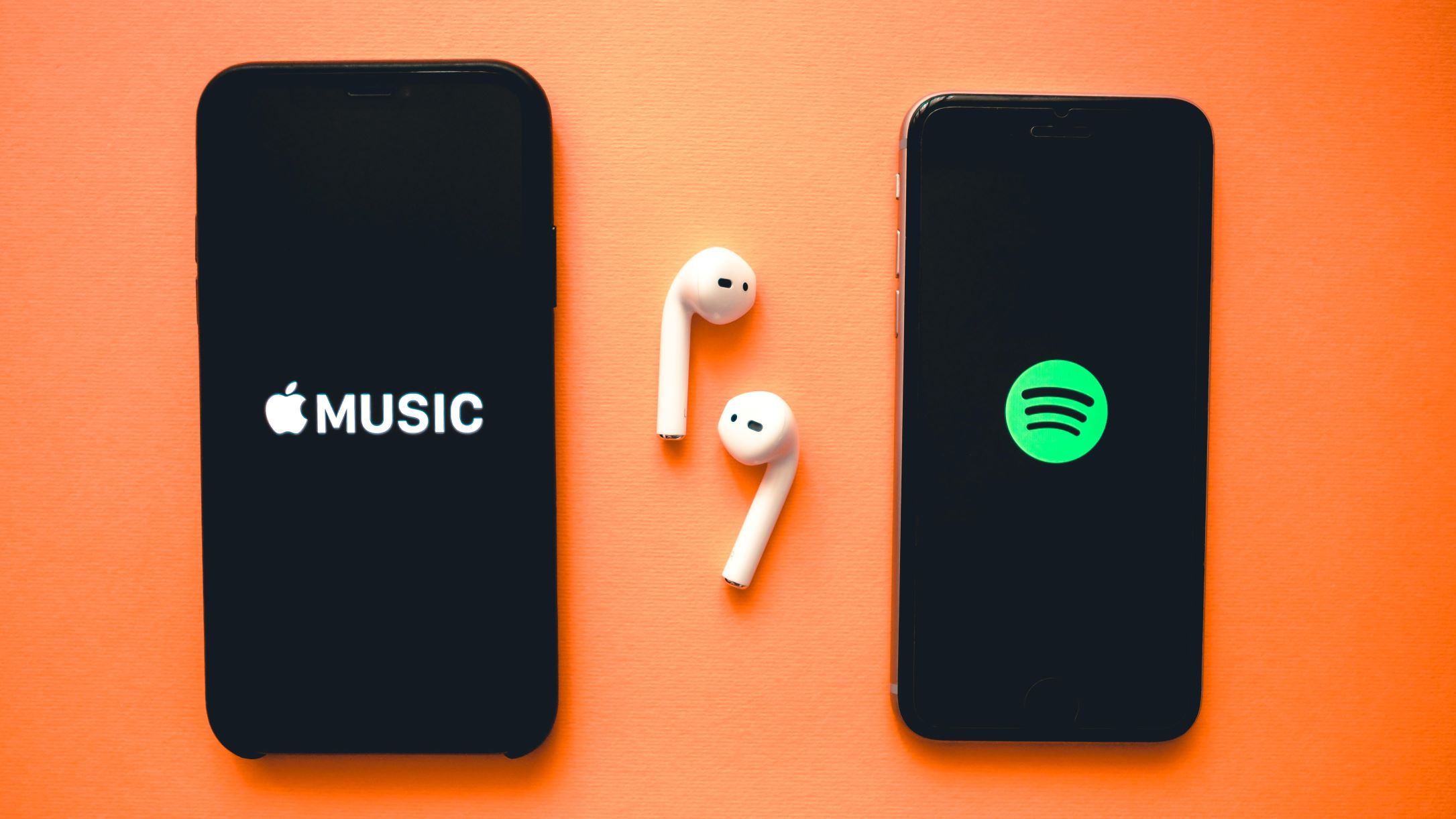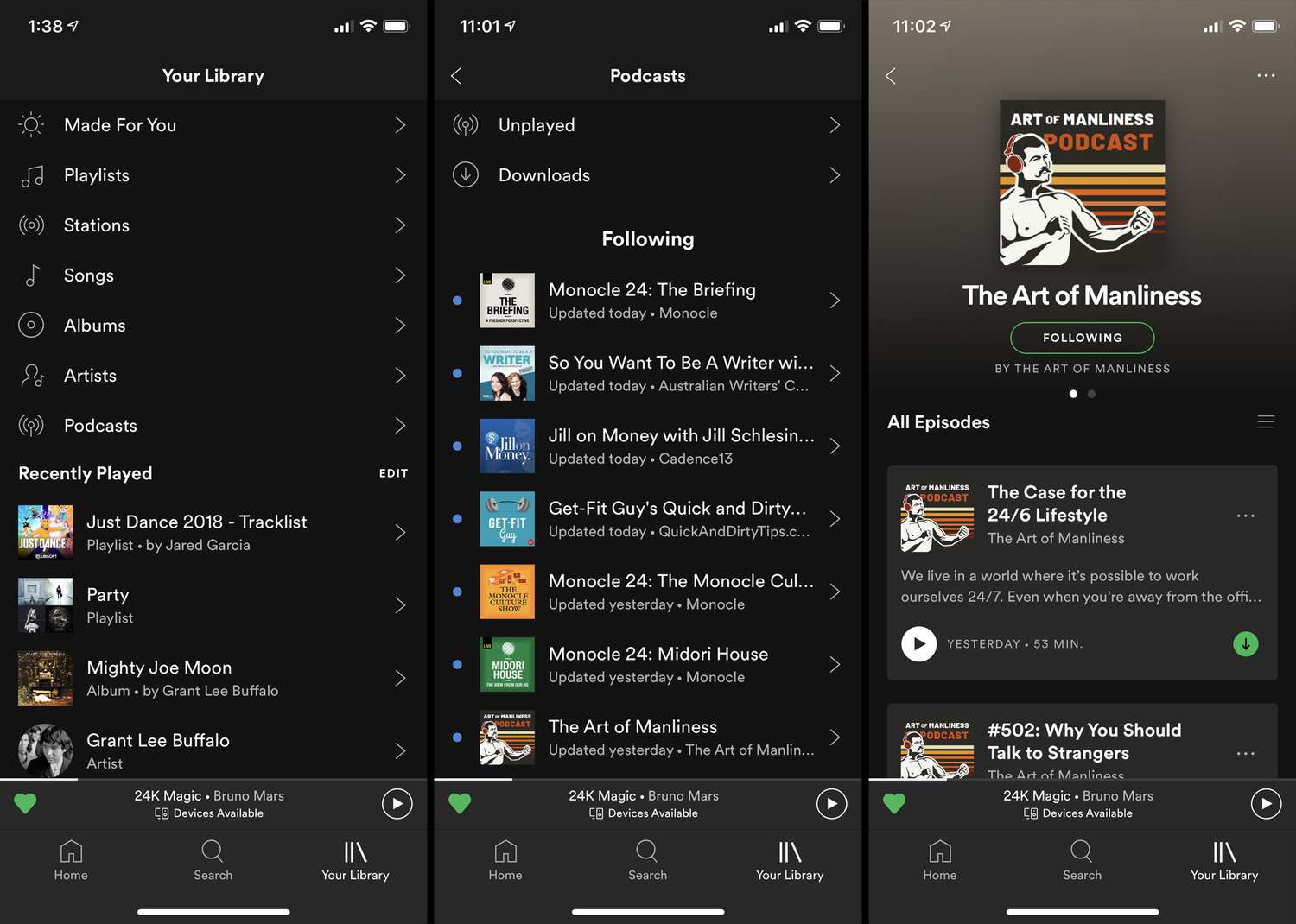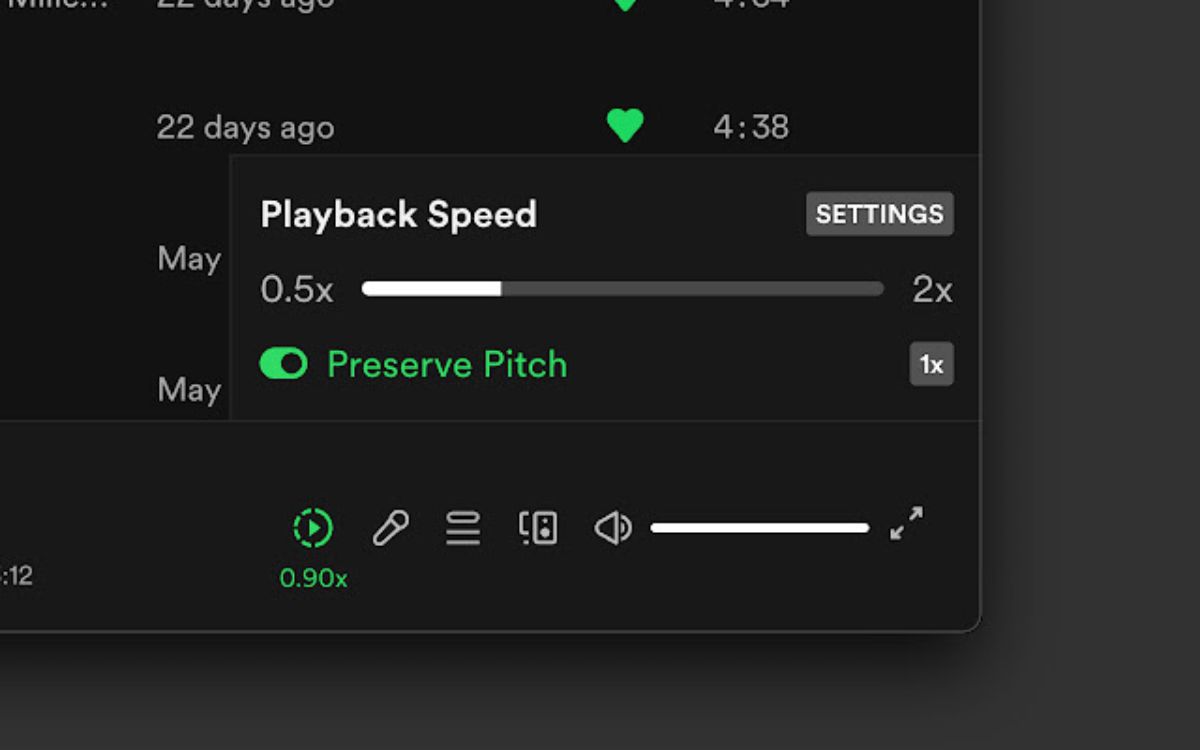Home>Events & Info>Podcast>How To Start A Podcast Spotify
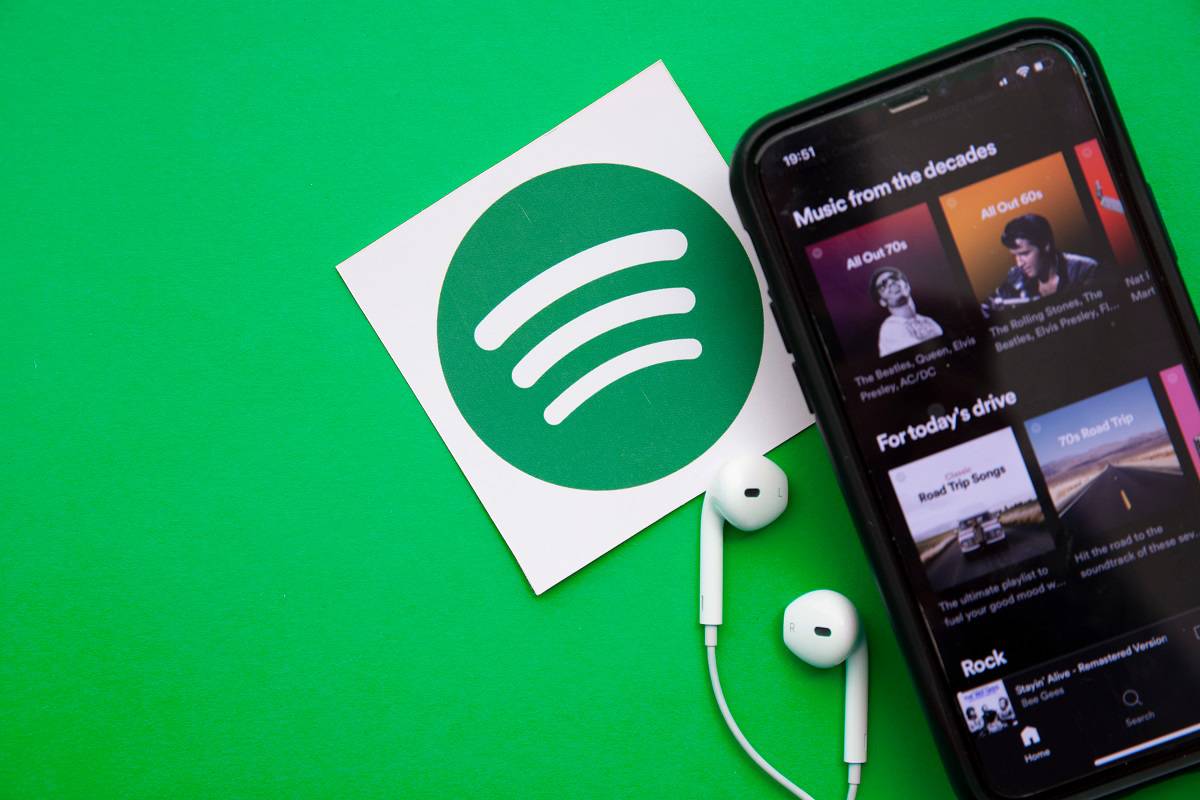

Podcast
How To Start A Podcast Spotify
Modified: February 17, 2024
Learn how to start a podcast on Spotify and reach a wider audience. Get expert tips and advice on growing your podcast with Spotify's powerful platform.
(Many of the links in this article redirect to a specific reviewed product. Your purchase of these products through affiliate links helps to generate commission for AudioLover.com, at no extra cost. Learn more)
Table of Contents
- Introduction
- Step 1: Choosing a podcast topic
- Step 2: Planning your podcast format
- Step 3: Setting up your recording equipment
- Step 4: Recording your podcast episodes
- Step 5: Editing and post-production
- Step 6: Choosing a podcast hosting platform
- Step 7: Submitting your podcast to Spotify
- Step 8: Promoting your podcast
- Conclusion
Introduction
Podcasts have exploded in popularity in recent years, becoming a valuable and accessible medium for content creators and listeners alike. With its convenience and versatility, podcasting offers a unique way to share stories, insights, and knowledge with a global audience.
If you’re considering starting your own podcast, you’re in for an exciting adventure. But where do you begin? How do you ensure your podcast stands out among the thousands of others already out there? One highly recommended platform to consider is Spotify, a leading streaming service that has embraced the podcasting world and offers easy access to a massive listener base.
In this article, we will explore the step-by-step process of starting a podcast on Spotify and share valuable tips on how to optimize your podcast for success. From choosing a podcast topic to promoting your show, we’ll guide you through the journey of becoming a podcasting sensation and finding your place in the vast Spotify podcast library.
Not only does Spotify provide a huge audience for your podcast, but it also offers a user-friendly platform with powerful features that make it easier for listeners to discover and engage with your content. So, without further ado, let’s dive into the steps you need to take to get your podcast up and running on Spotify.
Step 1: Choosing a podcast topic
Choosing the right podcast topic is crucial as it will determine the direction and focus of your entire podcast. To make a decision, consider your interests, expertise, and target audience. Here are some tips to help you choose a compelling podcast topic:
- Follow your passion: Pick a subject that you are genuinely passionate about. When you’re enthusiastic about a topic, it will shine through in your episodes and engage your listeners.
- Niche down: Instead of covering a broad topic, consider narrowing down your focus. Find a unique angle or explore a specific subtopic within a broader subject. This will help you stand out and attract a dedicated audience.
- Consider your expertise: Choose a topic that aligns with your knowledge and experience. Your expertise will lend credibility and allow you to provide valuable insights and information to your listeners.
- Research your target audience: Understand who your target audience is and what they are interested in. Conduct market research, survey your potential listeners, or analyze popular podcasts in your niche to identify gaps or untapped areas that you can explore.
- Blend your interests: If you have multiple passions or areas of expertise, try to find a way to blend them together in a unique and captivating way. This can help you create a podcast that is both engaging and fulfilling for you as a host.
- Stay true to yourself: Authenticity is key in podcasting. Choose a topic that aligns with your values, personality, and style. This will allow you to connect with your audience on a deeper level and build a loyal following.
Remember, the topic you choose should not only excite you, but also have the potential to attract and captivate your target audience. Take your time in this step as it will lay the foundation for the success of your podcast.
Step 2: Planning your podcast format
Now that you have chosen your podcast topic, it’s time to think about the format of your show. The format refers to the overall structure and style of your podcast episodes. A well-planned format can keep your listeners engaged and coming back for more. Here are some factors to consider when planning your podcast format:
- Episode length: Determine the ideal length for your episodes. Consider your topic, target audience, and the amount of content you have to share. Aim for a duration that strikes a balance between providing valuable information and maintaining listeners’ attention.
- Episode frequency: Decide how often you will release new episodes. Consistency is key in building a loyal audience. Choose a schedule that you can realistically stick to, whether it’s weekly, bi-weekly, or monthly.
- Segmentation: Break down your episodes into segments or sections. This can help with organization and keeps things interesting for your listeners. Consider incorporating segments such as interviews, Q&A sessions, storytelling, or expert tips.
- Hosting style: Determine how you will present your podcast. Will it be a solo show where you share your thoughts and insights, or will you have co-hosts or guests? Consider what style resonates best with your topic and audience.
- Script or outline: Decide whether you want to use a script or an outline for your episodes. Scripts ensure a more structured and professional delivery, while outlines allow for a more conversational and spontaneous approach. Find the balance that works best for you.
- Engagement and interaction: Explore ways to engage and interact with your audience. This can include incorporating listener questions, conducting interviews, or hosting live Q&A sessions. Encouraging feedback and participation will enhance the overall podcast experience.
Remember, the format of your podcast should align with your topic, your hosting style, and the preferences of your target audience. It’s important to plan ahead and have a clear vision for how each episode will flow to create a compelling and cohesive listening experience.
Step 3: Setting up your recording equipment
Investing in the right recording equipment is essential for producing high-quality podcast episodes that captivate your audience. While it’s possible to start with basic equipment and upgrade as you grow, having a solid setup from the beginning can significantly improve the overall production value. Here are the key components you’ll need:
- Microphone: A good-quality microphone is the foundation of a great podcast. Consider a USB microphone for simplicity or an XLR microphone for more professional sound. Popular options include the Blue Yeti, Audio-Technica ATR2100x, and Shure SM58.
- Headphones: A pair of comfortable headphones is crucial for monitoring your audio while recording and editing. Look for headphones that provide accurate sound reproduction, such as Audio-Technica ATH-M50x or Sony MDR7506.
- Pop filter: A pop filter helps minimize plosive sounds (e.g., “p” and “b” sounds) from distorting your audio. It is usually placed in front of the microphone to soften the impact of strong bursts of air.
- Microphone stand or boom arm: A stand or boom arm will hold your microphone in place, ensuring stability and freeing up your hands while recording. This helps maintain consistent audio quality and allows for easy adjustments when needed.
- Audio interface: If you opt for an XLR microphone, you’ll need an audio interface to connect it to your computer. The interface converts analog signals from the microphone into digital signals that can be captured and edited on your computer.
- Acoustic treatment: Consider adding some basic acoustic treatment to your recording space to reduce echoes, reverberations, and background noise. This can include using foam panels, portable acoustic booths, or even recording in a closet filled with clothes.
- Recording software: There are various recording software options available, both free and paid. Audacity, GarageBand (for Mac users), and Adobe Audition are popular choices that provide easy-to-use interfaces for recording and editing your podcast episodes.
Before purchasing any equipment, it’s important to research and read reviews to find the best options within your budget. Additionally, be sure to test your setup before recording your first episode to ensure everything is working properly and to make any necessary adjustments.
Remember, while having high-quality equipment is important, the content and delivery of your podcast are what will truly engage your audience. Focus on providing valuable and engaging content while using the equipment to enhance the listening experience.
Step 4: Recording your podcast episodes
Now that you have your recording equipment set up, it’s time to start recording your podcast episodes. The recording process is where the magic happens, as you bring your topic to life and engage with your audience through your unique voice and perspective. Here are some tips to ensure a smooth recording session:
- Choose a quiet recording space: Find a quiet room or area where you can record without interruptions or background noise. Close windows, turn off fans or air conditioning, and be mindful of any potential sources of unwanted noise.
- Warm-up and speak clearly: Before hitting the record button, warm up your vocal cords with some vocal exercises or light chatting. Enunciate your words clearly, speak slowly, and pause when necessary to maintain clarity and articulation.
- Use a proper microphone technique: Position yourself correctly in relation to the microphone. Aim for a consistent distance (around 6-8 inches) to maintain even sound levels. Avoid breathing directly into the microphone and be mindful of plosive sounds.
- Follow your episode outline: If you have an episode outline or script, use it as a guide to stay on track. It can help you remember key points, transitions, and segment timings. However, don’t be afraid to go off-script and add spontaneous elements to keep the conversation engaging.
- Record in segments: Break down longer episodes into manageable segments to maintain focus and energy. Pause and take short breaks between segments to gather your thoughts and ensure consistent audio quality throughout the recording.
- Monitor your audio levels: Keep an eye on your audio levels during the recording to avoid clipping or distortion. Adjust your microphone gain or your input levels in the recording software to achieve a clear and balanced sound.
- Relax and be yourself: Remember to relax and be natural while recording. Speak with confidence and let your personality shine through. Don’t be afraid to inject humor, pause for emphasis, or show genuine enthusiasm for your topic.
After recording your episodes, make sure to save your audio in a lossless format (such as WAV or FLAC) for optimal sound quality. It’s also a good practice to create backup copies of your recordings to prevent any potential loss.
With each recording session, you will become more comfortable and confident behind the microphone. Embrace the process, enjoy the journey, and remember that practice makes perfect.
Step 5: Editing and post-production
Once you have recorded your podcast episodes, the next step is to edit and polish them for a professional and engaging listening experience. Editing and post-production involve fine-tuning the audio, removing any mistakes or distractions, and adding elements to enhance the overall quality of your podcast. Here are some important steps to follow during the editing process:
- Import your recordings: Transfer your recorded audio files to your chosen editing software. This could be Audacity, GarageBand, Adobe Audition, or any other software that suits your needs and preference.
- Trimming and cutting: Remove any unwanted pauses, mistakes, or background noise. Trim the recordings to tighten the overall flow and maintain a good pace for your episodes.
- Enhancing audio quality: Adjust the audio levels to ensure consistent volume throughout the episode. Use equalization (EQ) settings to balance frequencies and make your voice sound clear and vibrant. Apply noise reduction filters to eliminate any remaining background noise.
- Add music and sound effects: Consider adding an intro and outro music to give your podcast a professional touch. You can also incorporate sound effects or jingles to enhance certain segments or transitions within your episodes.
- Inserting transitions: Smoothly transition between segments or topics by adding fade-ins, fade-outs, or crossfades. These transitions create a cohesive listening experience and make your podcast flow seamlessly.
- Include show notes and timestamps: Write a brief summary of each episode and include timestamps for key topics or segments. This helps your listeners navigate through your episodes and find specific content easily.
- Review and QC: Listen to the edited episode in its entirety to ensure everything sounds seamless and any potential errors are caught. Check for any remaining glitches or audio artifacts that might need further adjustments.
- Export your final episode: Once you are satisfied with the editing, export the episode in a compressed audio format, such as MP3 or AAC. Compressing the file size will ensure faster streaming and downloading for your listeners.
Remember, the editing process gives you the opportunity to enhance the quality and presentation of your podcast. However, be mindful of not over-editing to the point where your episodes feel robotic or lack authenticity. Strive for a balanced approach that maintains the natural flow and conversational tone of your conversation.
As you gain experience, your editing skills will improve, and you will develop your own unique style. Embrace your creativity, experiment with different editing techniques, and have fun refining your episodes to make them truly shine.
Step 6: Choosing a podcast hosting platform
After you’ve recorded and edited your podcast episodes, it’s time to choose a podcast hosting platform. A podcast hosting platform is where you’ll upload your episodes, generate an RSS feed, and manage the distribution of your podcast to various podcast directories, including Spotify. Here are some key factors to consider when selecting your podcast hosting platform:
- Reliability and uptime: Look for a hosting platform with a reputation for reliable hosting and minimal downtime. A platform that ensures your episodes are always available to your audience is crucial for maintaining a positive listener experience.
- Storage and bandwidth: Consider the amount of storage and bandwidth provided by the hosting platform. Ensure it offers sufficient space to store your episodes and enough bandwidth to accommodate the number of listeners you anticipate.
- Podcast analytics: Analytics provide insights into your podcast’s performance, including the number of downloads, listener demographics, and episode popularity. Look for a hosting platform that offers robust analytics to help you understand your audience and make informed decisions.
- Podcast monetization: If monetization is a goal for your podcast, see if the hosting platform offers built-in monetization options. This can include integration with advertising networks or the ability to offer paid subscriptions or merchandise.
- Integration with directories: Check if the hosting platform offers seamless integration with popular podcast directories like Spotify, Apple Podcasts, and Google Podcasts. A smooth integration simplifies the process of submitting your podcast to these directories and increases your visibility.
- Additional features: Consider any additional features offered by the hosting platform that can enhance your podcasting experience. This may include a customizable podcast website, social sharing capabilities, or the ability to schedule and automate episode releases.
- Cost and payment structure: Evaluate the pricing plans and payment structure of the hosting platform. Look for a plan that fits within your budget and offers the features you need. Also, consider if the pricing is based on storage, bandwidth, or the number of episodes.
Popular podcast hosting platforms to consider include Libsyn, Podbean, Anchor, and Buzzsprout. Each platform has its own benefits and features, so take the time to compare their offerings and choose the one that best suits your needs and goals.
Keep in mind that switching hosting platforms in the future can be challenging, so it’s essential to make an informed decision right from the start. Once you’ve selected your hosting platform, you’ll be ready to upload your episodes, generate your RSS feed, and submit your podcast to Spotify.
Step 7: Submitting your podcast to Spotify
Now that you have chosen your podcast hosting platform and uploaded your episodes, it’s time to submit your podcast to Spotify. Spotify has become a prominent platform for podcast listening, with millions of active users eager to discover new shows. Here’s how you can submit your podcast to Spotify:
- Check your hosting platform: Ensure that your chosen hosting platform supports Spotify distribution. Most hosting platforms offer integration with Spotify, making it a straightforward process.
- Review Spotify’s guidelines: Familiarize yourself with Spotify’s podcast submission guidelines. Ensure that your content meets their requirements in terms of quality, legality, and adherence to their content policies.
- Prepare your podcast details: Gather all the necessary information for your podcast submission, including your podcast title, description, cover art, and any additional metadata such as episode titles, descriptions, and release dates.
- Submit your podcast: Within your hosting platform, locate the option to submit your podcast to Spotify. Follow the provided steps, which may involve authorizing the platform to submit your podcast on your behalf.
- Review and wait for approval: After you submit your podcast, Spotify will review your submission to ensure it meets their guidelines. The approval process can take anywhere from a few hours to a few weeks, so be patient while they review your podcast.
- Verify your podcast: Once your podcast is approved, you will receive a notification from Spotify. At this point, you may need to verify your podcast ownership by following the specified instructions provided by Spotify.
- Update your podcast details: After verification, you can log into your hosting platform and make any necessary changes to your podcast’s details, such as updating episode descriptions, adding show notes, or modifying your cover art. These changes will be reflected on Spotify.
- Promote your podcast on Spotify: Once your podcast is live on Spotify, take advantage of the advertising and promotional opportunities provided by the platform. Encourage your audience to listen to your podcast on Spotify, share it with their friends, and leave reviews and ratings.
Remember, Spotify is just one of many podcast directories available. It’s important to also submit your podcast to other popular directories such as Apple Podcasts, Google Podcasts, and Stitcher to reach a wider audience.
Submitting your podcast to Spotify opens up the opportunity to attract new listeners and grow your audience. Stay engaged with your listeners, consistently release new episodes, and continue to promote your podcast to maximize its reach and impact.
Step 8: Promoting your podcast
Once your podcast is live on platforms like Spotify, it’s time to promote it and attract a loyal audience. Effective promotion is essential to increase your visibility, build a listener base, and ultimately make your podcast a success. Here are some strategies to help you promote your podcast:
- Create a captivating podcast trailer: Craft a short and compelling trailer that gives potential listeners a glimpse of what your podcast is all about. Use it to generate excitement and entice people to check out your episodes.
- Optimize your podcast for search: Utilize Search Engine Optimization (SEO) techniques to improve the discoverability of your podcast. Use relevant keywords in your podcast title, description, and episode titles to help your target audience find you when searching for specific topics.
- Utilize your existing online presence: Leverage your website, blog, or social media platforms to promote your podcast. Create posts, share snippets from your episodes, and encourage engagement and discussion around your content.
- Collaborate with other podcasters: Build relationships with fellow podcasters in your niche and explore opportunities for cross-promotion. Guest appearances on other podcasts or inviting guest hosts onto your show can help increase your reach and introduce your podcast to new audiences.
- Engage with your listeners: Encourage listeners to leave reviews and ratings on platforms like Spotify. Respond to comments, messages, and emails from your audience and make them feel connected and valued. Consider creating a community forum or social media group to foster ongoing engagement.
- Utilize email marketing: Build an email list and send regular newsletters to your subscribers. Keep them informed about new episodes, special guests, or exclusive content. Personalize your emails and provide value to encourage engagement and increase listenership.
- Guest blogging and interviews: Write guest blog posts or participate in interviews on relevant platforms. This can help establish yourself as an expert in your niche and drive traffic to your podcast.
- Attend and speak at industry events: Look for opportunities to attend industry conferences, conventions, or events related to your podcast topic. Network with fellow podcasters, share knowledge, and spread the word about your podcast.
- Run targeted advertising campaigns: Consider investing in social media or search engine advertising to reach a wider audience. Research your target audience, select the appropriate platforms, and create engaging ads that highlight the unique aspects of your podcast.
- Monitor your podcast analytics: Regularly review your podcast analytics to understand which episodes are performing well and to identify any patterns or trends. Use this information to refine your content strategy and cater to the preferences and interests of your audience.
Remember that promoting your podcast requires consistent effort and creativity. Experiment with different strategies, adapt to feedback, and always strive to provide valuable and engaging content to your listeners. As your podcast gains traction, word-of-mouth recommendations and organic growth can significantly contribute to its success.
By implementing these promotional strategies, you can increase your chances of reaching a wider audience, building a loyal listener base, and making a lasting impact with your podcast.
Conclusion
Starting a podcast on Spotify can open up a world of possibilities for sharing your passion and expertise with a global audience. By following the step-by-step process outlined in this guide, you can set yourself up for success and increase your chances of achieving your podcasting goals.
From choosing a compelling podcast topic to promoting your show, each step plays a critical role in the growth and sustainability of your podcast. Take the time to research and plan, invest in quality recording equipment, and fine-tune your editing skills to deliver a podcast that captivates and engages your listeners.
Remember that building a loyal audience takes time and consistency. Stay committed to a schedule, engage with your listeners, and continuously improve the quality of your content. Leverage the power of social media, collaboration, and strategic marketing to increase your podcast’s visibility and reach.
Embrace the journey of podcasting and allow your unique voice and perspective to shine through. Learn from feedback, adapt, and continuously refine your podcasting skills. With dedication and perseverance, you have the opportunity to create a podcast that resonates with listeners and establishes you as an authority in your niche.
So, whether you’re starting a podcast as a hobby, to share your knowledge, or to monetize your expertise, remember to enjoy the process and have fun along the way. Your podcast has the potential to make a meaningful impact on the lives of your listeners and provide a platform for creativity, inspiration, and connection.
Now, go forth and create an incredible podcasting experience on Spotify!



